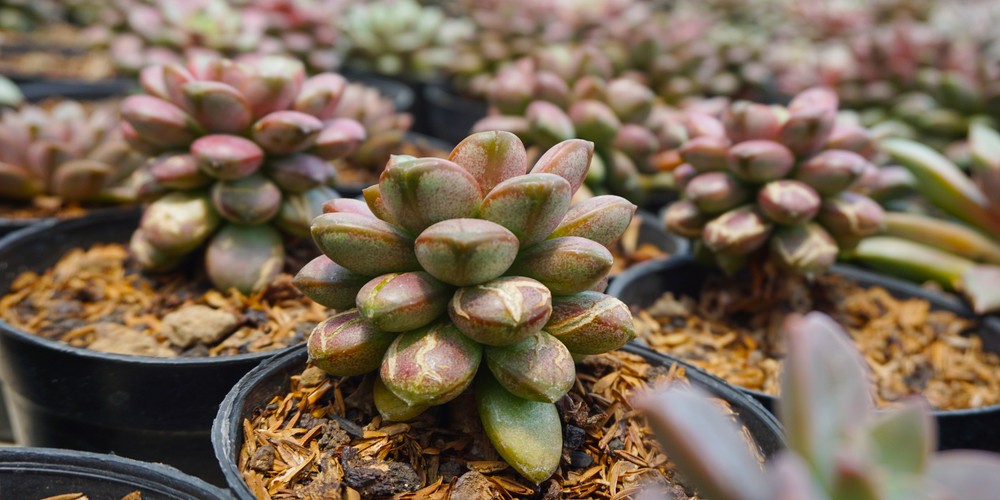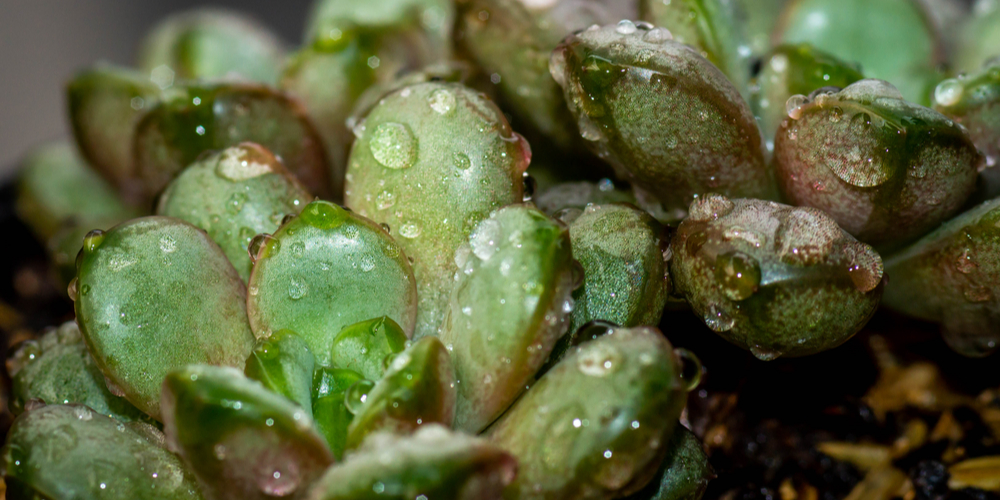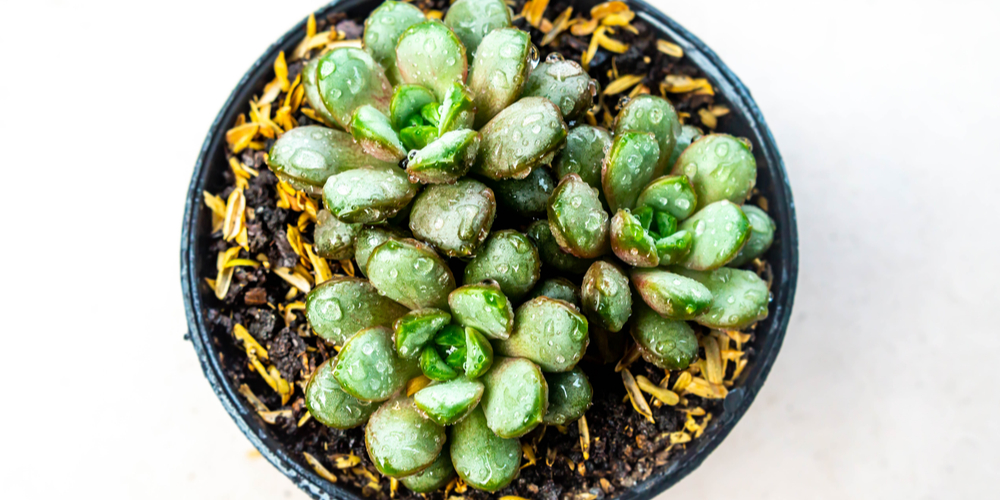The Graptoveria Amethorum plant is a rare succulent with plump and stubby leaves that are bright sea green and gray. The succulent’s rosettes adopt plum-colored margins when exposed to bright light.
| Botanical Name | xGraptoveria ‘Amethorum’ |
| Common Name | Graptoveria |
| Plant Type | Perennial |
| Flower Color | Pink flower on stems |
| Size When Mature | 3 to 5 inches |
| Bloom Time | Summer to fall |
| Sun Requirements | Full sun to Partial Sun |
| USDA Hardiness Zones | 9 to 11 |
| Soil PH Range | 5.0 to 7.0 |
| Soil Type | Loose and free-draining |
| Water Needs | Low |
| Native Area | Mexico |
What you Need to Know About Graptoveria Amethorum
The Graptoveria ‘Amethorum’ is truly remarkable as a specimen plant or as a natural decoration around the house. The short and stubby leaves form a rosette and are green-gray in color. Depending on the amount of light you give, the fleshy succulent will produce plum and reddish margins that give the plant added depth and texture.
As a graptoveria, the ‘Amethorum’ is an easygoing plant and doesn’t need a lot of water. Over time, the succulent sends out stem shoots that form buds and turn into pink, multi-petaled flowers. These generally last a week or two.
How to Care for Graptoveria Amethorum
Here’s everything you need to know about growing and caring for a thriving Graptoveria Amethorum
Light
Graptoveria species love to bask under the sun and in a warm environment, and the same goes for ‘Amethorum’. Being native to Mexico, the succulent can withstand full sun in zone 9 but may need to be limited to the morning sun in zones 10 and 11.
Those in colder regions can still take care of a Graptoveria Amethorum plant as long as they protect it from frost. In this case, full sun is a must. The hybrid succulent can also stay in the shade although it won’t likely produce the plum tinge on its leaves.
Water and Soil Needs
The Graptoveria Amethorum thrives best when it’s watered only occasionally. The succulent stores water on its plump leaves and can survive for a long time without help from its owner. Moisture uptake is relatively quick, so in order to prevent root rot, you should put your plant in loose and well-drained soil.
First-time succulent plant parents will need to understand that Amethorum only needs a once-a-week watering or less. Putting them in a succulent or cactus mix is also important if you want your graptoveria to live a long time.
The ‘Amethorum’ isn’t too particular about soil pH, but it does need a container that has drainage holes. The best watering schedule for an Amethorum is deep and occasional watering so all the roots get to have a drink.
Temperature Requirements
The Mexico native grows well in USDA zones 9 to 11. The succulent prefers a warm environment and full sun, and it doesn’t take to cold temperatures too well. It’s recommended that you bring your plant indoors to prevent it from dying due to hard frost during the winter.
Fertilizer
The best fertilizer to use on a Graptoveria Amethorum is a formula for succulents given during its growing season.
Feeding during fall or winter is not recommended for succulents. Also, you’ll want to dilute the fertilizer to half strength since Amethorum doesn’t need a lot of nutrients to thrive. To prevent fertilizer burn, follow the instructions on the fertilizer label and mix it at half dose.
Succulents generally do not need to be fertilized but will welcome added nutrients. Feed once a year and your Graptoveria Amethorum will be happy.
Common Diseases
Graptoveria Amethorum is a hardy succulent species and is generally not affected by pests or diseases. As long as you keep the plant healthy and allow the soil to dry out between waterings then it should be fine. In cases of root rot, you can bring the Amethorum out of the soil and let it dry in about 3 to 5 days, then repot using fresh soil media.
Graptoveria Amethorum Propagation
Offset and leaf cuttings are the two most common ways to propagate a Graptoveria Amethorum.
Mature Amethorums are more likely to produce offsets, which are smaller versions of their parent succulent plants. Offsets usually sprout on the side of the adult succulent and can be cut off easily with scissors or a sharp knife. Treat the offset with similar care, watering only once every two weeks or less.
Healthy leaves may be taken by twisting them off the parent plant. Allow the ends to dry for a few days before placing them in a container with a succulent or cactus mix. Just put the leaf on top with the fleshy end touching the medium to activate the growing process. Moisten the soil once a week with a spray of water and wait for the roots or pups to form.
Related article: Graptoveria Debbie


